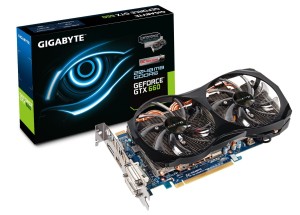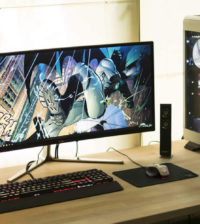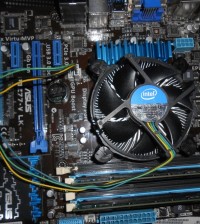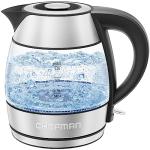Layman’s Guide for Building Your Own Computer – Part 2: RAM, Hard Drive and Video Card
In part 1, I’ve already purchased the CPU and motherboard for a total of $329.98.
That leaves $570.02 left over to buy the RAM, hard drive, video card, optical drive, power supply and case to stick to my original $900 budget.
Screw computer-markups! Let’s continue onward!
RAM
 The function of RAM really isn’t rocket science. Basically, RAM allows your computer to run more efficiently when multiple programs are open simultaneously. 4GB is standard for a normal machine while 8GB works for a gaming or application-heavy work rig (8+GB if you’re crazy and just want to watch the world burn).
The function of RAM really isn’t rocket science. Basically, RAM allows your computer to run more efficiently when multiple programs are open simultaneously. 4GB is standard for a normal machine while 8GB works for a gaming or application-heavy work rig (8+GB if you’re crazy and just want to watch the world burn).
RAM comes in sticks that fit into your motherboard’s channels. If you have 2 channels, you can have up to 2 sticks of RAM, 4 channels equals up to 4 sticks of RAM, etc. You should also keep the RAM memory sizes consistent across all channels. For example, if you have two channels and want 4GB of RAM, purchase two 2GB sticks. The motherboard specifications will include supported RAM speeds (example: 1333/1600/1800).
Currently, most RAM is DDR3 generation. It’s fairly cheap, thus no real need to downgrade. As far as brands are concerned, there’s no significant difference. However, a few popular brands include Kingston, Corsair, Crucial, and PNY.
Hard Drive
 The hard drive stores every piece of information that you load onto your computer. As with RAM, it’s best not to over-complicate this. Consider the amount of information you want to store; 500GB – 1TB will suit most needs.
The hard drive stores every piece of information that you load onto your computer. As with RAM, it’s best not to over-complicate this. Consider the amount of information you want to store; 500GB – 1TB will suit most needs.
If you store a lot of movies/music/files (and other, more questionable entertainment…) on your system, increase the size of the storage space. Since storage memory is relatively cheap, you can go larger than you really need to be safe.
Most hard drives run at a 7200RPM speed at a SATA 3.0Gb/s. If your motherboard supports 6.0Gb/s, feel free to upgrade. The faster the drive, the faster your computer will boot, open files, and launch programs.
There’s also the option of purchasing an SSD (Solid State Drive). These operate much faster than a regular hard drive, but are also significantly more expensive. Personally, the huge price increase doesn’t make it worth it in my build. Some people recommend getting a smaller SSD (64-128GB) to house your operating system so that your computer boots faster. Personally, I’ll pocket the $100 and wait the additional 15-30 seconds on each boot.
Excellent brands include Western Digital, Seagate, Hitachi, and Samsung. Most hard drives have mixed reviews, but I suspect most negative feedback is related to user-error. Solid SSD brands include Corsair and Crucial.
Video Card
 Video cards allow you to run advanced computer games and also help with high-intensity graphics, animation and video editing work.
Video cards allow you to run advanced computer games and also help with high-intensity graphics, animation and video editing work.
If you’re a gamer, this is the part of the process that will make you hot and bothered. It’s usually the most complicated step, simply because there are a ton of video cards out there. In addition, different games tend to perform better on different brands of cards and video card specs just confuse the hell out of me.
The two key players in the video card chip manufacturing war are NVIDIA and ATI (now known as AMD). The company that makes better chips basically changes with the seasons.
My recommendation is to determine what you want to do with your computer, set a price range and read reviews on a few different cards within that range. For a rough reference:
- Cards $100 or under – A good card in this price range will be great for HD video editing/graphics work and light gaming (probably can’t handle many new games efficiently).
- $100 – $200 – Cards in this range can generally handle all of the latest games, though likely not on the maximum graphics and resolution settings for the most hardware-intensive software.
- $200 – $350 – If you’re a hardcore gamer, this is probably the best range for you. You’ll be able to play all of the latest games, smooth as silk, on max settings for the near future.
- $350+ – This is the range that sets your phasers to Death Star. If you want your computer to chew up and spit out any game that’s thrown at it for a few years to come, go with one of these powerhouses. For more power, you can buy two SLI video cards and run two in one system. However, your motherboard must support this option. Check the specifications.
The newest, best video cards can get up to the $1,000 price range. Most people will be fine with a $200 limit. Keep in mind that the more powerful you go, the more power you’ll need to run these beasts. In addition, the temperature in your computer will be raised significantly and you will need to invest in cooling.
If you want even more power and have an SLI/Crossfire-compatible motherboard, you can run two video cards simultaneously. For a brief reference:
SLI = NVidia graphics cards ONLY. You must use the same model card in an SLI configuration, but your cards can be at different clock speeds.
Crossfire = ATI/AMD graphics cards ONLY. You can use any two ATI/AMD in a Crossfire configuration, but you get the best performance when both cards are the same model.
As far as card manufacturers are concerned, EVGA and XFX reputably have the best warranties and customer support, though XFX cards also reportedly have some cooling issues. MSI, Sapphire and GIGABYTE are also decent options.
If you’ve made it this far, you’re in for the long haul. So far I’ve spent $704.96 (after rebates are considered) and have $195.04 left over.












